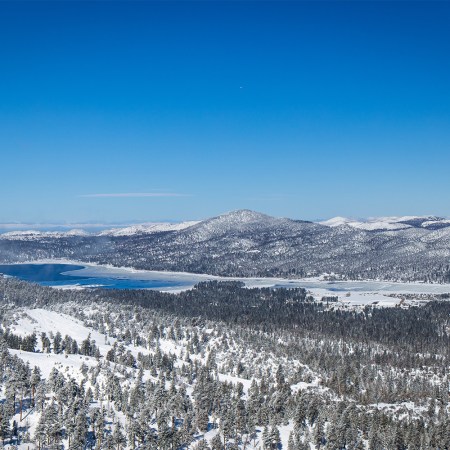While San Francisco’s geographical location means excellent viewing for whales almost year round, May is optimal: Gray whales are busy migrating north from Baja to Alaska, while hungry humpbacks roam coastal waters — and the bay — in search of food for their calves. The number of gray whales, whose migration starts around mid-February and ends mid-May, may be dwindling, but humpbacks will remain in the area through the fall.
And — no promises, of course — if you’re super lucky (and do your viewing a bit farther off the coast), you may even spot a blue whale, which at 80-100 feet long and weighing some 150 tons, are among the biggest animals ever to have lived.
“The one time that I saw a blue whale, it went right under the boat,” says Linda Brown, bookkeeper for the San-Francisco-based Oceanic Society, the first non-profit organization in America dedicated to marine conservation, which also runs whale-watching expeditions (more on those below). “It was something. You could see both ends of it on either side of the boat.”
Here, four cool ways to try whale watching around San Francisco this season. The bright side is that even if you don’t happen to spot one? You’ll still be immersed in nature — not to mention gawking at some of the most spectacular coastline in the world — which in itself is a welcome antidote to troubled times.
Like a Scientist
If you’re itching to geek out on not just whales, but dolphins, seals, birds and other wildlife, a whale-watching tour with the Oceanic Society is just the ticket. The nonprofit offers naturalist-led tours to Santa Cruz and the Farallon Islands, a National Wildlife Refuge about 30 miles west of the Golden Gate Bridge, each with a maximum of 20 passengers. Trips are best suited for serious nature enthusiasts, as they’re time-consuming (7 and 7.5 hours, respectively) and pricey (from $450/passenger). But you’re almost guaranteed to see a whale (in fact, sightings averaged 20 per trip for Farallon Islands trips in 2021!), a portion of the proceeds go to marine conservation and the professional photos included in the cost make for a nifty souvenir.
From a Boat
San Francisco Whale Tours is a popular choice for a lively, 2.5-hour cruise around the Golden Gate Bridge. You can bring your own food and drink onboard, including wine and beer (no hard liquor), and if you don’t spot a whale, your next trip is free. Farther south, in Monterey, Sea Goddess Whale Watching also guarantees sightings for passengers. Trips depart from Moss Landing, at the mouth of the Monterey Bay Canyon, one of the world’s largest underwater canyons.
In a Kayak
Who doesn’t remember that gob-smacking footage of two kayakers in Avila Bay who narrowly avoided a Biblical Jonah moment in 2020 (the video even comes with a content warning from The Guardian, where it runs)? While you should always keep a safe distance (at least 100 meters, about the length of a football field) from wildlife to avoid a crap-your-pants encounter, the experience of seeing whales right from the water is pretty damn hard to top.
In San Francisco, paddlers of all levels should head to Sausalito-based Sea Trek, a trusted outfitter since 1982; while its guided tours don’t specifically offer whale watching, you just may see one on trips to the Golden Gate Bridge or in San Francisco Bay (along with plenty of other wildlife). In Santa Cruz, veteran outfitter Venture Quest Kayak will hook you up with gear and a customized itinerary (you can also rent kayaks for a self-guided tour).
On Foot
You don’t have to shell out big bucks to spot the giant creatures of the deep. Instead, lace up your hiking boots for a DIY whale-watching walkabout around several spots both in-town and farther afield.
Within city limits, the former military post of Fort Funston offers sweeping ocean views from its craggy bluffs; you can also hike down the steep, sandy inclines and do your gazing right from the beach. Land’s End, the aptly named tip of coastline near the Golden Gate Bridge, also offers a prime viewing spot for whales (you may even be able to see them as they make their way into the bay).
Along the coastline from the South Bay all the way north to Bodega Bay, take your pick from an array of viewing points. Bonita Point, located in the Marin headlands within the Golden Gate National Recreation Area, draws plenty of whale watchers, as does the Point Reyes Lighthouse. Also in the Marin Headlands, the Muir Beach Overlook serves up sweeping views of the Pacific Ocean, and to the north, Point Reyes Peninsula. Want to make a day of it? Keep heading north to Bodega Head, near Bodega Bay, which juts into the ocean and draws marine enthusiasts galore.
Wherever you go, experts recommend heading out during a rising tide, which will help push the whales closer to shore for easier spotting. And don’t forget a good pair of binoculars.
This article was featured in the InsideHook SF newsletter. Sign up now for more from the Bay Area.






















